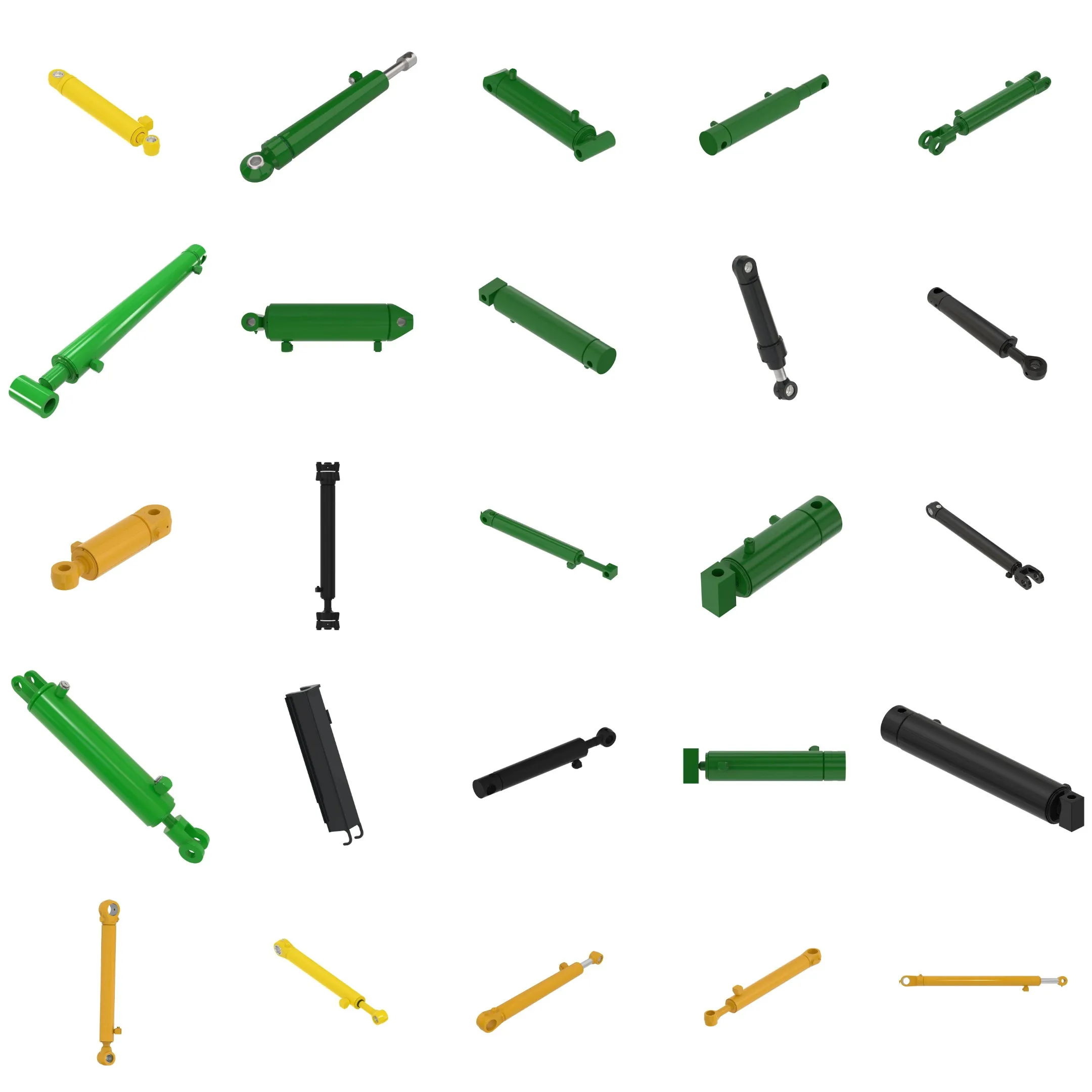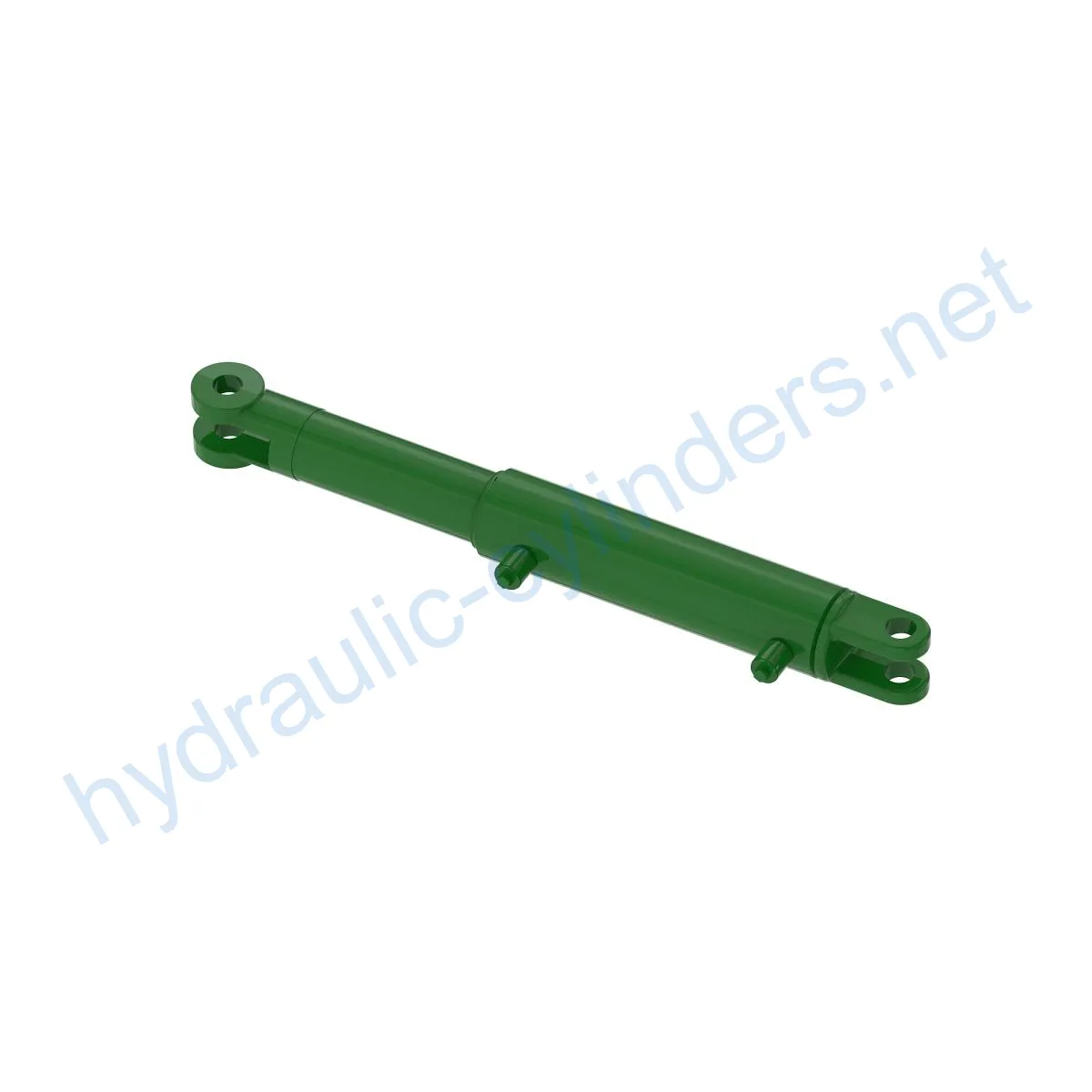Replacement Of AH230703 Hydraulic Cylinder
As one of the hydraulic cylinders manufacturers, suppliers, and exporters of mechanical products, We offer hydraulic cylinders and many other products.
Please get in touch with us for details.
Mail:sales@hydraulic-cylinders.net
Manufacturer supplier exporter of hydraulic cylinders.
Replacement Of AH230703 Hydraulic Cylinder
Introduction:
The Replacement Of AH230703 Hydraulic Cylinder is a crucial component in various hydraulic systems. It plays a vital role in providing the force and motion required for the proper functioning of equipment. This hydraulic cylinder is designed to replace the damaged or worn-out cylinders, ensuring the equipment’s optimal performance in different applications.
Specifications
- Weight: 24.08 lb
- Height: 2.8 in
- Width: 4.9 in
- Length: 27.5 in
Model
Model: 2510S
Features
- Improved Equipment Performance: Replacing damaged or worn-out hydraulic cylinders can restore the equipment’s normal operational capabilities, ensuring optimal performance in various applications.
- Enhanced Safety: Regularly replacing hydraulic cylinders can reduce safety hazards caused by cylinder failures, ensuring the safety of operators and equipment.
- Overload Protection: New cylinder designs often incorporate better overload protection mechanisms, enhancing safety.
- Quick Installation: Modern hydraulic cylinders are designed for easy installation and replacement, minimizing downtime.
- Standardized Components: Many hydraulic cylinders are standardized products, making it easier to obtain replacement parts in the market.
We proudly manufacture this product, offering a perfect replacement for these hydraulic cylinders. Our products meet the highest quality standards and are designed to provide efficient and reliable performance.
Applications
This hydraulic cylinder finds application in various industries and equipment. Here are a few examples:
- Excavators: The hydraulic cylinder in the excavator’s boom or bucket may get damaged due to prolonged use or overload, requiring replacement to restore normal operation.
- Cranes: The hydraulic cylinder in a crane’s jib is prone to wear and tear during frequent lifting and lowering processes. Regular replacement is necessary to ensure safety.
- Tractors: The front loader hydraulic cylinder in tractors may experience leaks or performance degradation due to continuous lifting and tilting operations, requiring replacement.
- Harvesters: The hydraulic system in harvesters operates under high pressure, and fatigue can lead to cylinder damage. Timely replacement is essential to maintain work efficiency.
- Automated Production Lines: Hydraulic cylinders are used to control robotic arms and other automation equipment. Cylinder failure can significantly impact production efficiency, necessitating immediate replacement.
- Die Casting Machines: In high-pressure and high-temperature environments, hydraulic cylinders may experience performance degradation. Regular replacement ensures product quality.
- Mining Equipment: Hydraulic cylinders are employed in lifting and moving heavy loads in mining equipment. Due to harsh working conditions, regular inspection and replacement are necessary to avoid equipment failure.
- Bulldozers: The hydraulic cylinder wear in a bulldozer’s blade can lead to a decrease in pushing capacity, requiring timely replacement to maintain operational efficiency.
Maintenance Tasks
Regular maintenance tasks for the hydraulic cylinder include:
- Periodic Inspection: Regularly inspecting the hydraulic cylinder for any signs of damage or wear is crucial to identify potential issues.
- Proper Lubrication: Adequate lubrication ensures smooth operation and extends the lifespan of the cylinder. Using the appropriate hydraulic oil is recommended.
- Seal Replacement: Over time, seals may deteriorate, leading to leaks. Timely replacement of seals ensures the cylinder’s optimum performance.
- Calibration Check: Checking and adjusting the cylinder’s calibration ensures accurate operation and prevents any deviations.
During installation, it is essential to provide proper guidance for aligning the cylinder correctly. Using suitable installation brackets to secure the cylinder is also recommended. We offer inspection, repair, and replacement services, providing genuine replacement parts and rebuilding capabilities to enhance the lifespan of the hydraulic cylinder.
Safety Considerations and Environmental Factors
When using hydraulic cylinders, following appropriate safety measures is of utmost importance. Ensuring proper handling, maintenance, and regular inspections can minimize safety risks. Additionally, considering environmental factors, such as leak prevention and proper disposal of hydraulic fluids, contributes to environmental sustainability.
Failure Diagnosis and Common Issues
- Leakage: Hydraulic cylinder leakage can occur due to seal failure, damaged rods, or worn-out components.
- Insufficient Force: Inadequate force generation may result from internal component wear or insufficient hydraulic pressure.
- Slow Operation: Slow cylinder movement can be caused by restricted fluid flow, internal blockages, or low hydraulic pressure.
- Noise and Vibration: Excessive noise and vibration may indicate misalignment, worn-out components, or fluid contamination.
- Unsteady Movement: Unstable cylinder movement can be a result of air or fluid contamination, improper lubrication, or internal component damage.
To address these issues, it is essential to diagnose the root cause accurately. Troubleshooting tips and solutions are available to help readers effectively diagnose and resolve problems. Additionally, preventive measures can minimize potential issues, ensuring the hydraulic cylinder’s optimal performance.

Design Considerations and Selection Criteria
When selecting a hydraulic cylinder, several design considerations and selection criteria play a crucial role:
- Load-Bearing Capacity: The hydraulic cylinder’s load-bearing capacity should match the intended application to ensure optimal performance under varying loads.
- Sealing Performance: High-quality seals, such as piston seals and rod seals made from durable materials like polyurethane and nitrile rubber, help maintain effective sealing and prevent leaks.
- Durability: The cylinder’s durability is crucial for withstanding the operating conditions and ensuring a long lifespan.
- Safety: Hydraulic cylinders should incorporate safety features, such as overload protection mechanisms, to ensure safe operation.
- Maintainability: Easy maintenance and repairability contribute to the cylinder’s longevity and minimize downtime.
Sealing and Lubrication
Proper sealing and lubrication are essential for the hydraulic cylinder’s optimal performance:
- Various sealing components, including piston seals and rod seals, should be made of wear-resistant materials like polyurethane and nitrile rubber.
- The cylinder body and threaded end surfaces should undergo precise treatment to enhance wear resistance.
- Regular lubrication with the appropriate hydraulic oil is necessary to ensure smooth operation and reduce friction.

Regular Inspection and Preventive Maintenance Measures
To ensure the longevity and optimal performance of the hydraulic cylinder, the following preventive maintenance measures are recommended:
Take a Tour of Our VR Factory:
Take a tour of our VR factory with the following
Hydraulic Cylinder Application:


